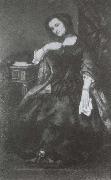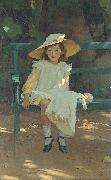Wholesale Oil Painting No Minimum |
|||||||||||
|
|
|||||||||||

|
|||||||||||
|
|
|
||||||||
Jules PascinBulgarian-born French Expressionist Painter, 1885-1930,American painter, draughtsman and printmaker of Bulgarian birth, active in France. He attended secondary school in Vienna, returning in 1901 to Bucharest, where his family had settled, and working briefly in the office of his father's grain-merchandizing business. He was, however, already becoming passionately interested in drawing, for which he showed precocious talent. At the age of 16 he became the lover of a woman who ran a brothel and was allowed by her to draw the residents. In 1903 he moved to Munich, where he attended the art school run by Moritz Heymann. |
||||||||
|
|
||||||||
Portrait of Mary
Portrait of Mary Painting ID:: 51472 |
mk219
Oil on canvas
92x72.5cm
mk219 Oil on canvas 92x72.5cm |
|||||||
|
|
||||||||
Gustave Courbet1819-1877 French Gustave Courbet Locations was a French painter whose powerful pictures of peasants and scenes of everyday life established him as the leading figure of the realist movement of the mid-19th century. Gustave Courbet was born at Ornans on June 10, 1819. He appears to have inherited his vigorous temperament from his father, a landowner and prominent personality in the Franche-Comte region. At the age of 18 Gustave went to the College Royal at Besancon. There he openly expressed his dissatisfaction with the traditional classical subjects he was obliged to study, going so far as to lead a revolt among the students. In 1838 he was enrolled as an externe and could simultaneously attend the classes of Charles Flajoulot, director of the ecole des Beaux-Arts. At the college in Besançon, Courbet became fast friends with Max Buchon, whose Essais Poetiques (1839) he illustrated with four lithographs. In 1840 Courbet went to Paris to study law, but he decided to become a painter and spent much time copying in the Louvre. In 1844 his Self-Portrait with Black Dog was exhibited at the Salon. The following year he submitted five pictures; only one, Le Guitarrero, was accepted. After a complete rejection in 1847, the Liberal Jury of 1848 accepted all 10 of his entries, and the critic Champfleury, who was to become Courbet first staunch apologist, highly praised the Walpurgis Night. |
||||||||
|
|
||||||||
|
|
Portrait of Mary
Portrait of Mary Painting ID:: 55622 |
mk242
1857
176x106cm
mk242 1857 176x106cm |
||||||
|
|
||||||||
Alexander MannAlexander Mann (January 22, 1853 - January 26, 1908) was a Scottish landscape and genre painter. He was a member of New English Art Club and Royal Institute of Oil Painters. Alexander Mann was born in Glasgow, Scotland on January 22, 1853. He died in London on January 26, 1908. The second son of James Mann, merchant and collector, he took drawing lessons from the age of ten with Robert Greenlees (1820-94) and then attended evening classes at the Glasgow School of Art, where Greenlees was headmaster. In 1877 he went to Paris and enrolled at the Academie Julian, and then studied under Mihely Munk? - sy and from 1881 to 1885 under Carolus-Duran. From 1883-93 Mann exhibited in London at the Royal Academy, Royal Institute of Oil Painters, Fine Art Society, New Gallery, Ridley Art Club, New English Art Club and Society of British Artists, a society that appointed James McNeill Whistler its President in 1886. At the same year he was invited to become the first Scottish member of the New English Art Club and was joined by several of his friends, notably John Lavery, Thomas Millie Dow of the Glasgow Boys and Norman Garstin. Influenced by the Hague school and by Jules Bastien-Lepage, his picture A Bead Stringer, Venice gained an honorable mention at the Salon in 1885. After a public controversy over this painting when it was exhibited at the Royal Glasgow Institute, Mann settled in England, at West Hagbourne, Berkshire, and later in the neighboring village of Blewbury, where he painted a series of views of the Downs and portraits of country people. Mann traveled extensively in Britain, paying several visits to the coast in Angus and Fife, and to Walberswick, Suffolk. |
||||||||
|
|
||||||||
|
|
Portrait of Mary
Portrait of Mary Painting ID:: 81874 |
1898(1898)
Medium Oil on canvas
Dimensions 87 x 53.3 cm (34.3 x 21 in)
cyf 1898(1898) Medium Oil on canvas Dimensions 87 x 53.3 cm (34.3 x 21 in) cyf |
||||||
|
|
||||||||
|
Alexander Mann Alexander Mann (January 22, 1853 - January 26, 1908) was a Scottish landscape and genre painter. He was a member of New English Art Club and Royal Institute of Oil Painters. Alexander Mann was born in Glasgow, Scotland on January 22, 1853. He died in London on January 26, 1908. The second son of James Mann, merchant and collector, he took drawing lessons from the age of ten with Robert Greenlees (1820-94) and then attended evening classes at the Glasgow School of Art, where Greenlees was headmaster. In 1877 he went to Paris and enrolled at the Academie Julian, and then studied under Mihely Munk? - sy and from 1881 to 1885 under Carolus-Duran. From 1883-93 Mann exhibited in London at the Royal Academy, Royal Institute of Oil Painters, Fine Art Society, New Gallery, Ridley Art Club, New English Art Club and Society of British Artists, a society that appointed James McNeill Whistler its President in 1886. At the same year he was invited to become the first Scottish member of the New English Art Club and was joined by several of his friends, notably John Lavery, Thomas Millie Dow of the Glasgow Boys and Norman Garstin. Influenced by the Hague school and by Jules Bastien-Lepage, his picture A Bead Stringer, Venice gained an honorable mention at the Salon in 1885. After a public controversy over this painting when it was exhibited at the Royal Glasgow Institute, Mann settled in England, at West Hagbourne, Berkshire, and later in the neighboring village of Blewbury, where he painted a series of views of the Downs and portraits of country people. Mann traveled extensively in Britain, paying several visits to the coast in Angus and Fife, and to Walberswick, Suffolk. Portrait of Mary 1898(1898) Medium Oil on canvas Dimensions 87 x 53.3 cm (34.3 x 21 in) cyf |
||||||||
|
|
||||||||
|
Prev Next
|
||||||||
|
|
||||||||
|
Related Paintings to Alexander Mann :. |
||||||||
|
|
||||||||
|
CONTACT US |



